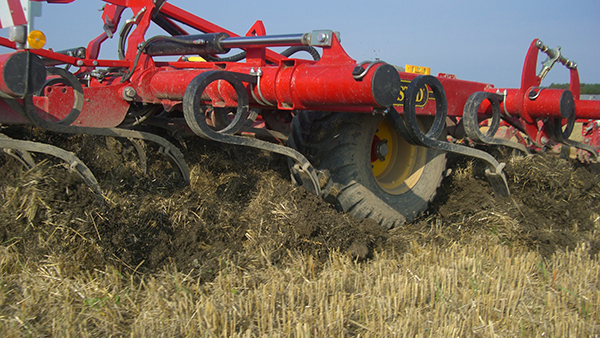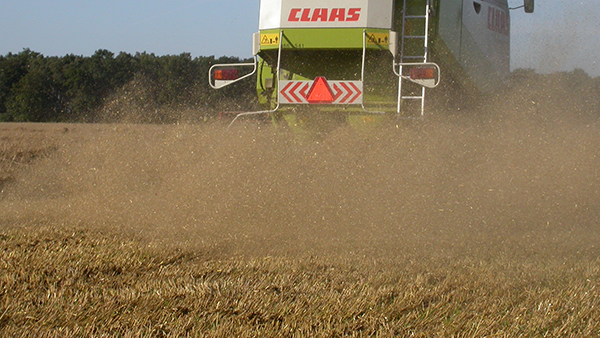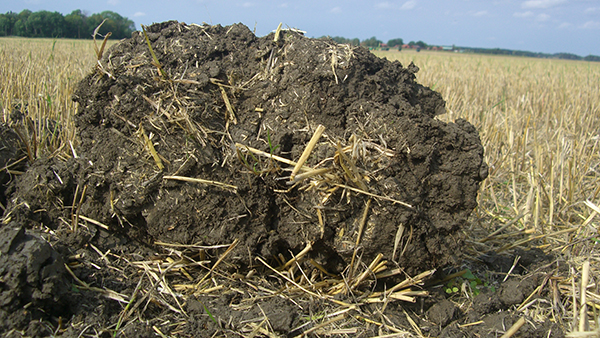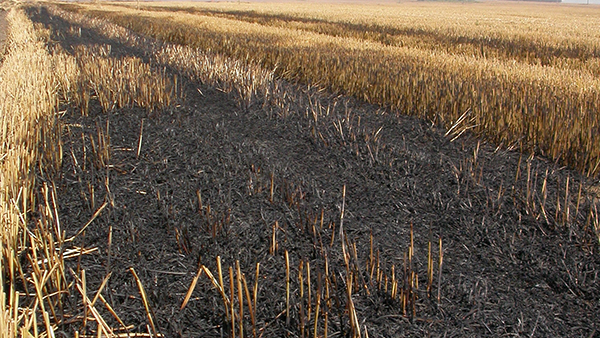When straw is mixed into the soil, it is immediately attacked by fungi and bacteria. These micro-organisms need carbohydrates for their growth and use the straw as a carbon and energy source. This means that the weight of straw gradually decreases as microorganisms grow and break down the straw.

Weight decrease starts immediately
If straw stubble is mixed into the soil in the middle of September, it will have lost one-third of its weight by the middle of October. By the following spring, half the weight of straw will be left and in September, one year after it was first buried, only 10-20% of the original weight of straw will remain. The rest of the carbon will have become new bacteria and fungi, and have been lost to the air as carbon dioxide or will have formed new stable compounds of organic matter in the soil.
No need for extra nitrogen
During decomposition, the micro-organisms also need nitrogen. At the start of decomposition, the process therefore ‘steals’ some nitrogen from the soil and locks this out of the reach of plants. Around 3kg N per ton of straw is locked away during this period. When half the original weight of straw has been lost through decomposition, the process reverses and the nitrogen is returned to the soil. At that time, the levels of mineral nitrogen in the soil are sufficiently high and nitrogen deficiency due to straw decomposition seldom occurs. However, on headlands and patches that the combine harvester has missed there may be a lack of nitrogen, since large amounts of straw are accumulated there.
Abrasion is important

While tillage depth is unimportant for decomposition, it is important that the surface of the straw is scraped as it passes through the combine harvester. If not, the micro-organisms have problems attacking the organic structures on the surface of the straw. This is the reason why a thatched roof can withstand rain, snow and micro-organisms for decades.
If the straw used for the thatch had been passed through a combine harvester and had its surface scratched, it would no longer be suitable for use as a roofing material.
‘Soiling’ the straw

Straw decomposition begins as soon as the straw comes into contact with the soil and the micro-organisms can start their attack. Decompositon is best in the top 5cm of the soil. The chop length of the straw is not important for decomposition either, so there is actually no advantage in chopping the straw finely as long as the subsequent stubble cultivation can take care of the straw.
However, things start to happen even when the straw is lying on the soil surface. Three heavy showers of rain can result in the straw losing up to 90% of its potassium and 60% of its phosphorus content, which is leached back into the soil.

Straw decomposition increases fertility
The effects of regular mixing of straw with the soil, as opposed to straw burning, include better aggregate stability, more earthworms and a soil with higher porosity and higher hydraulic conductivity. Many farmers throughout Europe have observed this following the more restrictive attitude to straw burning that has gained a foothold in various countries.
Dictionary:
Carbon dioxide = gaseous waste product (CO2) of cell respiration in the roots that is also the building brick together with water for sugars created by the plant through photosynthesis
Hydraulic conductivity = the amount of water that can infiltrate into the soil within a certain time is a good indicator of how well the soil is functioning from a soil physical perspective




